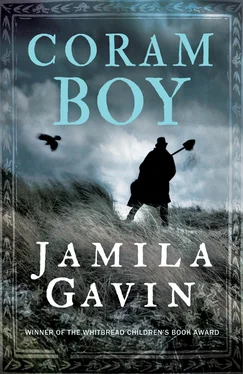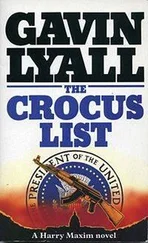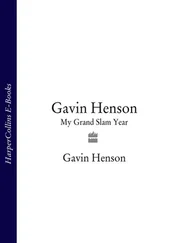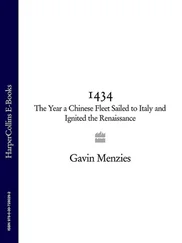
Have you ever wondered why Jamila Gavin
wrote Coram Boy ? Or where you can go to find out more about the Coram Foundation?
This Egmont Extras edition includes an exclusive,
never seen before interview with Jamila answering
these questions and more
– and you can also hear Jamila reading
an extract from the book.



FEATURES
Coram Boy by Jamila Gavin
An Interview with Jamila Gavin
A Reading from Coram Boy
Foreword
Prologue
Part One – 1741
1. The Coram man
2. The Black Dog
3. Meshak’s angel
4. Thomas and Alexander
5. Dawdley Dan
6. The orphanage
7. The cottage in the woods
8. Sir William returns
9. The ball
10. Jealousies
11. The Coram Hospital
12. When the voice breaks
13. A quickening
14. Autumn apples
Part Two
15. Mother Catbrain
16. Meeting in the chapel
17. Old friends
18. Partings
19. Mementoes
20. Apprenticed Out
21. A face from the past
22. Discovery
23. Child Slaves
24. Messiah
25. There came six boys
26. The Coram boy
27. Recognition
28. On the run
29. Everything is time
30. ‘Save him, sir!’
31. The river flows to the sea
32. The crying wood
33. Epilogue
An Interview with Jamila Gavin
A Reading from Coram Boy by Jamila Gavin
It was a passing remark which triggered the story – as is so often the way with writers. A friend murmured something about ‘the Coram man’ in the eighteenth century: someone who collected abandoned children, ostensibly to deliver them to the newly founded Coram Hospital for the Maintenance and Education of Exposed and Deserted Children. But the Hospital had never employed such a man, and any so-called Coram man was acting on his own, and most likely in his own interests without any regard for either the abandoned children or the miserable women who had entrusted their pathetic offspring into his safe-keeping. Indeed, the highways and by-ways of England were littered with the bones of little children. Children in the eighteenth century were routinely brutalised, whether it was at home or at Eton College, whether it was in the parish orphanages, which were no more than dying houses, or in the cathedral choir schools. It was often entirely a matter of luck if a child was kindly and lovingly reared, and it was to redress this that Captain Thomas Coram opened his hospital in 1741. It was people like him who gradually changed the whole perception of child care and who touched the conscience of the nation.
When I heard this, it was as if my brain became a stage. The story seemed to have been there all along, and my characters made their appearances fully formed and demanding my attention. I think I have loved these characters almost more than any I have ever created, and I still find myself grieving for those who were not so lucky as the Coram boy.
Once I let it be known that I was writing a book set in the eighteenth century, so many friends and acquaintances fed me with historical facts and details, some trivial, some important – but all of which were of invaluable help to me as I tried to immerse myself in the period. I must thank Peter Patten from whom, over fifteen years ago, I actually first heard the name Coram and who sowed the first seed of the story; Robert Eagle, who thought there was a terrific story to be told; Vivien Richmond, Marlyn Leese, Robin Lunn, Rajan Chet Singh and John Irving, who went beyond the call of friendship in providing me with information and inspiration; Lowinger Madison, librarian at Gloucester Cathedral; and Jenny Uglow, for her encouragement and for taking the precious time off to read the manuscript. Most of all, I must thank my editors: Miriam Hodgson, who never wavered in her patient support through all the doubts and fears as I trod new ground, and Cally Poplak who, with her meticulous eye and rigorous attention to detail, constantly kept me on my mettle.
The Coram Foundation exists today in Coram Fields. A manuscript of the Messiah is held in their archives (the Messiah was performed at the hospital in May, but for the purpose of my story I have moved it to December) and the portrait by Hogarth of Sir Thomas Coram still hangs there. The foundation’s work on behalf of children goes on.
The following books were of invaluable help to me in my research: Coram’s Children by Ruth McClure, Hogarth by Jenny Uglow, A History of England in the Eighteenth Century by Roy Porter and The Singing Game by Iona and Peter Opie, from which I adapted a number of rhymes.
Jamila Gavin
September 2000
‘Afine lady went to Stowe Fair. She was pregnant for the first time and, keen to know what the future held for her, she consulted an old gypsy woman.
‘“Why, my dear, I do believe you will have seven babies,” said the gypsy woman studying her hand. The fine lady went away and thought no more about it.
‘When the time came for her child to be born, a midwife was summoned to attend the labour. “What have we here?” she exclaimed as she delivered first one baby, then another and another.
‘“Oh no!” cried the young wife, remembering the gypsy’s prophecy. “That can’t be so!” She wept. But sure enough, one by one, seven little baby girls were born and laid into a basket.
‘The fine lady was upset fit to die. “I don’t care what the gypsy prophesied; I will only keep one baby. Take the other six away,” she begged the midwife. “Drown them in the river, but whatever you do, don’t tell my husband,” and she pressed a purse of silver into her hand.
‘So the midwife took the basket of six babies down to the river. But on the way she met the husband, a fine gentleman. He heard little squealings and noises. “Pray, what have you in that basket?” he asked.
‘“Oh it’s nothing but six little kittens I am going to drown in the river,” quoth she.
‘“I’m going that way myself,” said he. “Give them to me. I shall deal with them.” Whereupon, he took the basket and rode down to the river.
‘When the husband got to the riverbank and opened the basket, what did he see, but six little newborn girls. He frowned a dark, dreadful frown, then closing the basket took it away to a secret place.
‘Seven years passed. The gentleman and his fine lady prepared to celebrate their daughter’s birthday and to give thanks to God for preserving her through infancy. First they would go to church for a special service, then afterwards throw a party to which the whole village was invited.
‘“And what shall our daughter wear for this special day?” the husband asked his wife.
‘“Because she was born in October, I shall stitch her a dress of autumn colours,” the fine lady told him.
Читать дальше
















